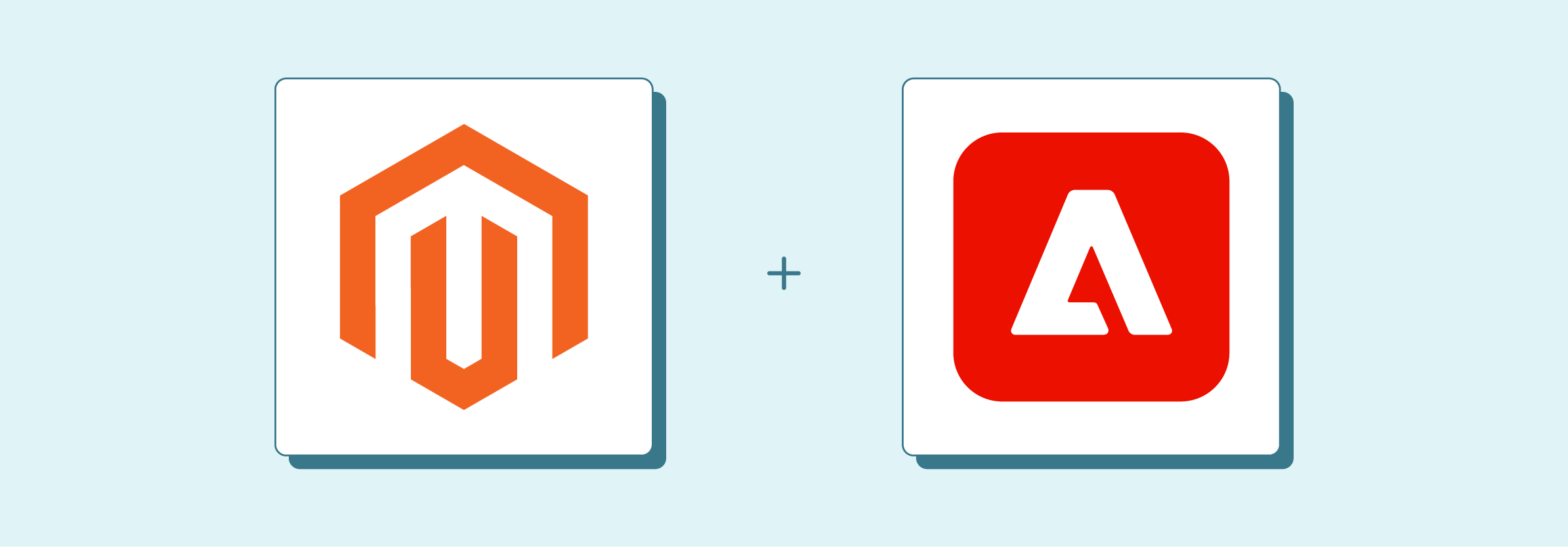
Understanding the Magento Framework in PHP Development
Want to simplify PHP development for your online stores? The Magento framework helps merge innovation and customization possibilities with various website optimization technologies. This article explores its features, compatibility, and seamless integration with Adobe Commerce.
Key Takeaways
-
Explore the features and flexibility of the Magento framework in PHP web development.
-
Learn about Magento's compatibility with various technologies and devices.
-
Discover the benefits of Magento's frequent updates for enhanced performance and security.
-
Explore Magento's connection with Adobe Commerce and its impact on ecommerce development.
What is Magento Framework in PHP Development?
Magento is an open-source ecommerce software platform created using PHP. It helps ecommerce merchants build and manage their online stores with ease. The platform’s flexibility in PHP development stems from its ability to tailor the user experience and store operations.
Magento's architecture is based on the Model-View-Controller (MVC) pattern, which separates the application logic into three interconnected elements. The Model represents the data structures, the View is the user interface, and the Controller handles the input and interactions between the Model and View.
This separation allows developers more control over each component. With support for multiple programming languages and versions, developers can build and customize ecommerce solutions to meet specific business needs.
The framework offers a customizable storefront, allowing businesses to create visually appealing and user-friendly online stores. Compatibility with various technologies ensures that Magento remains a top-tier option for web development in PHP environments.
Key Features of Magento Framework
The Magento 2 framework uses cutting-edge technology and provides consistent enhancements through regular updates. Here’s what you can expect from Magento:
1. Advanced technology

-
Optimized Performance: Built with object-oriented programming (OOP), Magento's core code is optimized for performance. It ensures that Magento-powered storefronts operate seamlessly, providing users with a fast and responsive browsing experience.
-
Frontend Flexibility: Magento provides flexibility in frontend development. It allows developers to create visually stunning and user-friendly interfaces using customizable templates.
-
Extensive Plugin Ecosystem: Various plugins are available in the Magento community. Developers can access many solutions to enhance store functionality and meet business goals. Magento store owners and developers can purchase suitable extensions from the Adobe commerce marketplace or other trusted vendors.
-
Robust API: Magento provides both REST and SOAP APIs that expose core backend functionality and data. Developers can use these well-documented web APIs to integrate Magento with various external services. It includes ERPs, CRMs, PIMs, mobile apps, etc.
-
Engaged Community: The Magento community fosters collaboration and knowledge-sharing among developers, merchants, and enthusiasts. It contributes to the continuous improvement and innovation of the Magento framework. You can attend community events like Meet Magento. Developers, vendors, and Magento experts gather at the events. They solve Magento queries, showcase products, and share actionable insights to grow an online business.
-
Customization and Scalability: It offers unparalleled customization and scalability, allowing businesses to adapt their stores to evolving requirements.
-
Stay Updated with Web Trends: Magento developers continually update their core code to align with the latest web trends. It ensures that Magento-based stores are equipped with cutting-edge features and functionalities.
2. Frequent updates

-
Enhanced Security and Bug Fixes: Each update typically includes fixes for bugs and vulnerabilities, bolstering the security of your online store. It ensures a safe environment for transactions and protects sensitive customer data.
-
Improved Functionality: Updates often introduce improvements in functionality, like enhanced navigation options and smoother checkout processes. It streamlines store operations and improves user experience, increasing customer satisfaction.
-
Developer Support and Customization: For developers, frequent updates mean access to a growing knowledge base and an expanding set of tools and resources. It empowers them to create custom extensions and tailor-made solutions to address specific business needs.
3. Compatibility

Magento works with a range of technologies and devices. It supports desktops, tablets, and mobile phones. You can easily integrate Magento payment gateways, shipping services, etc. Your PHP development expands as you add new features that help grow your business.
-
Responsive Design: With Magento, your ecommerce platform automatically adjusts its layout and design to fit different screen sizes. It enhances user engagement and encourages conversions across platforms.
-
Support for Extensions: Magento's extensive library of extensions further enhances compatibility by offering additional features and functionalities. Whether you need to add new pages, files, or custom functionalities, there's likely a Magento extension available.
Role and Responsibilities of Magento Framework
I. Interaction of application components
Application components manage how different parts of your ecommerce platform interact. Magento's backend uses indexing for faster search results and caching to speed up page loads.
It also uses routing to direct data where it needs to go within the software architecture. It ensures smooth functionality and performance of your eCommerce platform via:
1. Modular Architecture
The platform follows a modular architecture. Different application components, like modules, Magento themes, and libraries, interact to deliver specific functionalities. For example, modules handle features like checkout, catalog management, and customer management, while themes control the store's visual presentation.
2. Dependency Injection
In PHP Magento development, dependency injection is a technique where a class's dependencies (objects or functions) are provided externally. The design pattern allows components to be loosely coupled. It promotes modular and flexible code, facilitating easier testing and maintenance of Magento applications.
Magento uses the technique to manage component interactions. For example, when a module requires access to a service or another module, it can specify its dependencies. The dependency injection mechanism then automatically resolves and injects the required dependencies.
3. Event-Driven Architecture
Magento framework components can trigger and listen for events, enabling communication and coordination between different application parts. For example, when a new order is placed, various modules may need to perform actions such as updating inventory, sending order confirmation emails, or initiating payment processing.
By using events, Magento allows different modules to react to changes in the system without coupling them. It enables real-time applications that are more scalable, flexible, and responsive than the traditional architecture.
II. Ecommerce content management
1. Content Pages and Blocks
Your Magento site can enable and manage static pages and blocks. It includes creating Magento landing pages, informational pages, and promotional banners. For example, administrators can create a homepage Magento banners to advertise a seasonal sale or a blog post highlighting new arrivals.
2. Product Catalog Management
Magento allows administrators to add, edit, and organize products easily. It supports various product types, attributes, and categories, enabling retailers to showcase their products in a structured manner. For example, administrators can create Magento configurable products with multiple options, such as size and color variations. On the customer side, the layered navigation and faceted search features make it easy for shoppers to filter and find products.
3. SEO Optimization
With built-in features and extensions to optimize ecommerce content for search engines, You can enhance visibility and drive organic traffic to your online store. Magento enables customizable URLs, meta tags, and sitemaps to improve your site’s SEO. By implementing SEO content, retailers can improve their search engine rankings and attract more potential customers. For example, administrators may create SEO-friendly product URLs with relevant keywords and descriptions.
4. Multi-Language and Multi-Currency Support
You can enable multiple Magento languages and currencies in your online store. It improves your store’s global reach and allows you to cater to diverse customer preferences. The feature enables administrators to provide a localized shopping experience for international customers.
For example, administrators can create product descriptions and marketing materials in multiple languages. It ensures customers from different regions can easily understand and engage with the content.
Magento's Connection with Adobe Commerce

Adobe acquired Magento in 2018, making it a part of Adobe Commerce. Magento is the core framework for building robust ecommerce platforms within the Adobe ecosystem. The ecommerce platform combines Magento's open-source flexibility with Adobe's enterprise tools.
Developers can create unique online stores and use Adobe's suite to drive sales and manage customer experiences. There is a vast range of options for backend development while maintaining site performance and optimizing code structure using object-oriented programming practices inherited from PHP development principles.
Users can access Magento's customizability and scalability alongside Adobe’s powerful marketing capabilities. With robust marketing and Magento analytics tools, businesses have a comprehensive solution for their online operations.
Store owners can use data-driven insights to offer personalized customer experiences and targeted campaigns. With Adobe Commerce, Magento users can access advanced features such as AI-driven product recommendations, dynamic content creation, and omnichannel marketing automation.
FAQs
1. How secure is the Magento framework for an online store?
Magento is a trusted choice for building secure online stores. It incorporates various security measures, including data encryption, secure payment processing, etc. You can implement strong password policies, monitor suspicious activities, and employ secure Magento hosting solutions.
2. Do I need to know programming to use Magento?
A basic understanding of programming, particularly in PHP, helps one to use the Magento platform effectively. Familiarity with programming concepts enables users to customize and extend the platform's functionalities. It ensures the platform suits their business needs. Knowledge of HTML, CSS, and JavaScript can further enhance Magento customization capabilities.
3. Can I make my website look unique with Magento?
Magento provides extensive customization options, allowing users to create visually stunning and unique websites. With Magento's flexible theming system, users can modify or develop custom themes from scratch. The platform supports custom design element integrations, like Magento logos, fonts, colors, etc.
4. Can I add new features to my Magento site?
Users can use the Magento Marketplace to browse and install extensions developed by trusted third-party vendors. It helps cover diverse needs such as payment gateways, Magento shipping methods, marketing tools, etc. For advanced requirements, Magento provides the framework for developing custom modules tailored to specific business requirements.
Summary
The Magento framework ensures the seamless development of dynamic online stores. It offers tools and features to convert a Magento site into an attractive online store. Here's why Magento stands out:
-
Advanced technology for optimized performance and innovation.
-
Frequent updates for security, functionality, and developer support.
-
Compatibility across various technologies and devices.
-
Seamless content management for compelling content creation.
-
Integration with Adobe Commerce for advanced marketing and insights.
While your Magento site can seamlessly handle promotions and sales, consider exploring a reliable Magento hosting service for improved performance.




